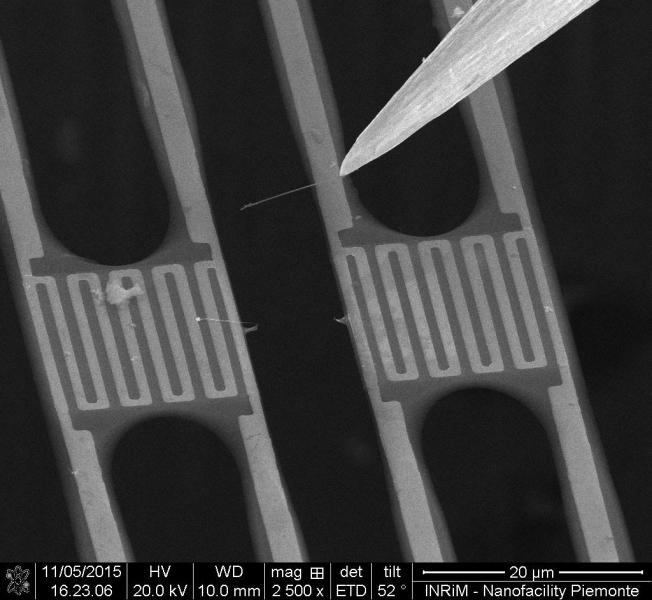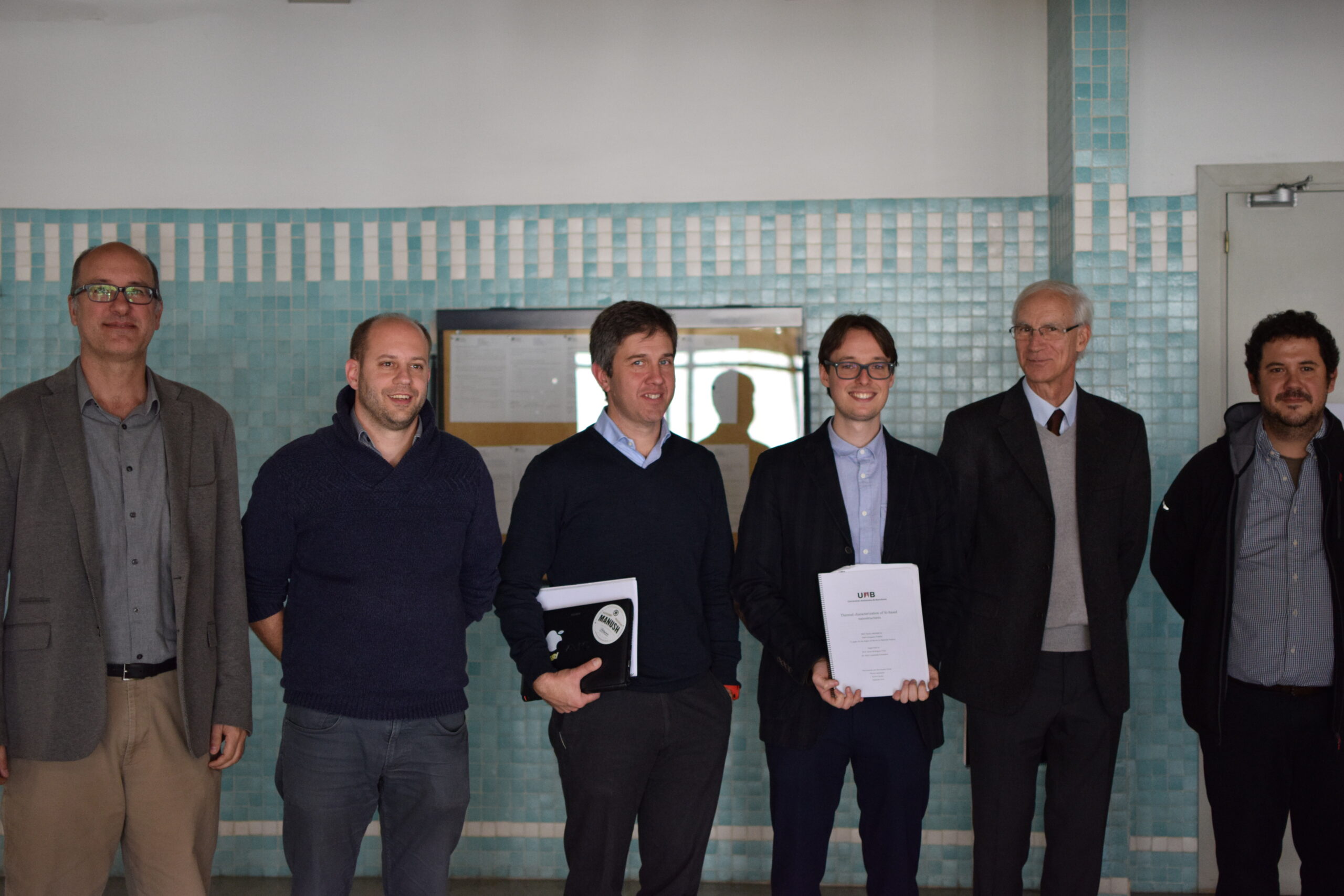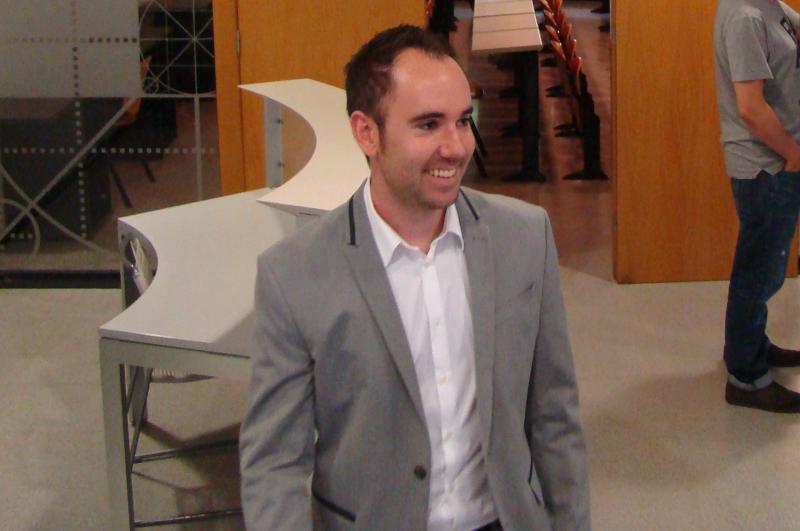Thesis defended in the group since 2014
2019

Thermal transport and thermoelectricity in organic and inorganic thin films
Gustavo Gonçalves Dalkiranis Pereira
In the context of the global energetic and climatic crisis, this thesis is focused on the use of thermoelectric technologies, and the use of nanomaterials, as a clean conversion strategy to harvest or to manage waste heat. In the first part of the thesis, the work is devoted to find and characterize efficient thermoelectric organic and inorganic materials with a good potential for energy harvesting applications. Thereunto, characterization techniques previously implemented in our group as well as new techniques are used. Also, one of these materials is used in a prototype thermoelectric generator. On the second part, a Si membrane-based microthermoelectric generator (µTEG) is evaluated as photosensor. These measurements show an unexpected enhancement of the Seebeck coefficient produced through the interaction with light. To better evaluate this photothermoelectric effect, a new device is designed, microfabricated, tested and characterized.
Link to the thesis manuscript
2017

Organic vapour-deposited stable glasses: from fundamental thermal properties to high-performance organic light-emitting diodes
Joan Ràfols Ribé
Physical vapour deposition has recently emerged as an alternative route to prepare glasses that span a broad range of stabilities, together with other features. Particularly, it is possible to achieve glasses with properties that outperform conventional glasses, and that would otherwise require times from tenths to several thousands of years of slowly-cooling or ageing. For this reason, these glasses are referred as highly stable glasses or ultrastable glasses. Specifically, it has been shown that for many molecular organic glass-formers, the deposition temperature plays a crucial role in determining glass properties, such as thermal stability, density or molecular orientation among others, giving the possibility to enhance the inherent instability of glasses. Vapour-deposited glasses offer new insights into the glass transition phenomenon but also potential applications in many technological processes such as in organic electronics. This work contributes to the existing knowledge of vapour-deposited glasses by studying their thermal properties and devitrification mechanisms and by exploring their potential application in the state-of-the-art OLED devices.

Link to the thesis manuscript
2016

Thermal characterization of Si-based nanomaterials
Pablo Ferrando Villalba
Thermoelectricity is a promising technology for scavenging energy from environmental temperature differences. The development of materials that transform heat into electricity in a more efficient way making use of this principle is necessary for opening new application niches. Nanostructuring a material has been demonstrated to increase the thermoelectric figure of merit of crystalline materials via a thermal conductivity reduction driven by enhanced phonon scattering. This thesis is committed to give a better insight into the processes that affect thermal transport in potential Si-based nanomaterials for thermoelectric generation.

Link to the thesis manuscript

Calorimetric study of vapour deposited glasses: beyond conventional stability and temperature limits
Cristian Rodríguez Tinoco
Vapour deposition has emerged as a very powerful tool to produce glasses of unprecedented stability. By tuning the deposition conditions, one can tailor the properties of the deposited glass. In particular, at substrate temperatures around 0.85Tg, the maximum stability is reached. On the other hand, fast-scanning nanocalorimetry has proven to be an extremely useful technique to evaluate different characteristics of the mechanisms behind the glass transition at temperatures much above the typically explored low temperature range. In this thesis, we present a detailed study of different aspects of the glass transition on vapour deposited organic glasses of Indomethacin and Celecoxib, by combining a variety of calorimetric techniques, from conventional to fast-scanning calorimetry, including high pressure-calorimetry. Stable glasses produced from the vapour phase exhibit a different transformation mechanism with respect to glasses obtained by cooling the liquid.

Link to the thesis manuscript
2014

Nanocalorimetric studies of size effects in magnetic oxides and formation kinetics in silicides
Manel Molina Ruiz
The advances in Nanoscience and Nanotechnology have been paved by the continuous development of new techniques adapted to small samples. In that framework, calorimetry is a technique suitable to measure thermodynamic properties and energetic processes, such as phase transitions, through the heat absorbed or released by the system. Taking profit of advances in microfabrication techniques a new family of nanocalorimeters, based on ultra-light calorimetric cells and built up onto thin film dielectric membranes, has emerged demonstrating enhanced sensitivities compared with traditional calorimeters, reaching levels better than 1 nJ K-1 mm-2. This technique has permitted to several research groups to explore new physical phenomena inaccessible before. The present research work deals with the development and optimization of this technique: the nanocalorimetry. We enlarge the dynamic ranges of applicability from ultrafast heating rates to quasi-static ones, and we demonstrate its utility in the study of different phase transitions at nanoscale.

Link to the thesis manuscript